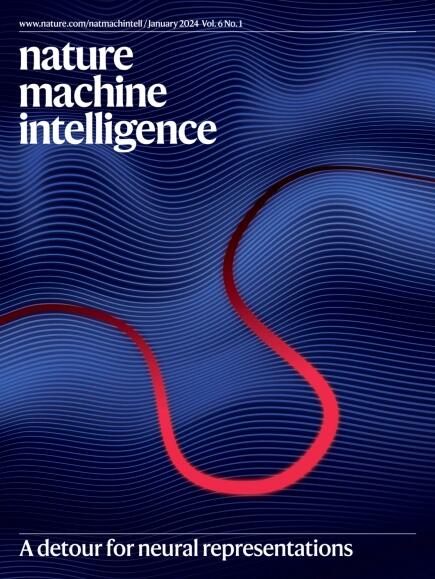Aligning generalization between humans and machines
IF 23.9
1区 计算机科学
Q1 COMPUTER SCIENCE, ARTIFICIAL INTELLIGENCE
引用次数: 0
Abstract
Recent advances in artificial intelligence (AI)—including generative approaches—have resulted in technology that can support humans in scientific discovery and forming decisions, but may also disrupt democracies and target individuals. The responsible use of AI and its participation in human–AI teams increasingly shows the need for AI alignment, that is, to make AI systems act according to our preferences. A crucial yet often overlooked aspect of these interactions is the different ways in which humans and machines generalize. In cognitive science, human generalization commonly involves abstraction and concept learning. By contrast, AI generalization encompasses out-of-domain generalization in machine learning, rule-based reasoning in symbolic AI, and abstraction in neurosymbolic AI. Here we combine insights from AI and cognitive science to identify key commonalities and differences across three dimensions: notions of, methods for, and evaluation of generalization. We map the different conceptualizations of generalization in AI and cognitive science along these three dimensions and consider their role for alignment in human–AI teaming. This results in interdisciplinary challenges across AI and cognitive science that must be tackled to support effective and cognitively supported alignment in human–AI teaming scenarios. Ilievski et al. examine differences and similarities in the various ways human and AI systems generalize. The insights are important for effectively supporting alignment in human–AI teams.


调整人类和机器之间的泛化
人工智能(AI)的最新进展-包括生成方法-已经产生了可以支持人类进行科学发现和形成决策的技术,但也可能破坏民主并针对个人。负责任地使用人工智能及其参与人类-人工智能团队越来越多地显示出人工智能一致性的必要性,也就是说,让人工智能系统根据我们的偏好行事。在这些互动中,一个重要但经常被忽视的方面是人类和机器进行泛化的不同方式。在认知科学中,人类的泛化通常涉及抽象和概念学习。相比之下,人工智能泛化包括机器学习中的域外泛化、符号人工智能中的基于规则的推理和神经符号人工智能中的抽象。在这里,我们结合了人工智能和认知科学的见解,以确定三个方面的关键共性和差异:泛化的概念、方法和评估。我们沿着这三个维度绘制了人工智能和认知科学中泛化的不同概念,并考虑了它们在人类-人工智能团队中的作用。这导致了人工智能和认知科学之间的跨学科挑战,必须解决这些挑战,以支持人类-人工智能团队场景中有效和认知支持的一致性。
本文章由计算机程序翻译,如有差异,请以英文原文为准。
求助全文
约1分钟内获得全文
求助全文
来源期刊

Nature Machine Intelligence
Multiple-
CiteScore
36.90
自引率
2.10%
发文量
127
期刊介绍:
Nature Machine Intelligence is a distinguished publication that presents original research and reviews on various topics in machine learning, robotics, and AI. Our focus extends beyond these fields, exploring their profound impact on other scientific disciplines, as well as societal and industrial aspects. We recognize limitless possibilities wherein machine intelligence can augment human capabilities and knowledge in domains like scientific exploration, healthcare, medical diagnostics, and the creation of safe and sustainable cities, transportation, and agriculture. Simultaneously, we acknowledge the emergence of ethical, social, and legal concerns due to the rapid pace of advancements.
To foster interdisciplinary discussions on these far-reaching implications, Nature Machine Intelligence serves as a platform for dialogue facilitated through Comments, News Features, News & Views articles, and Correspondence. Our goal is to encourage a comprehensive examination of these subjects.
Similar to all Nature-branded journals, Nature Machine Intelligence operates under the guidance of a team of skilled editors. We adhere to a fair and rigorous peer-review process, ensuring high standards of copy-editing and production, swift publication, and editorial independence.
 求助内容:
求助内容: 应助结果提醒方式:
应助结果提醒方式:


